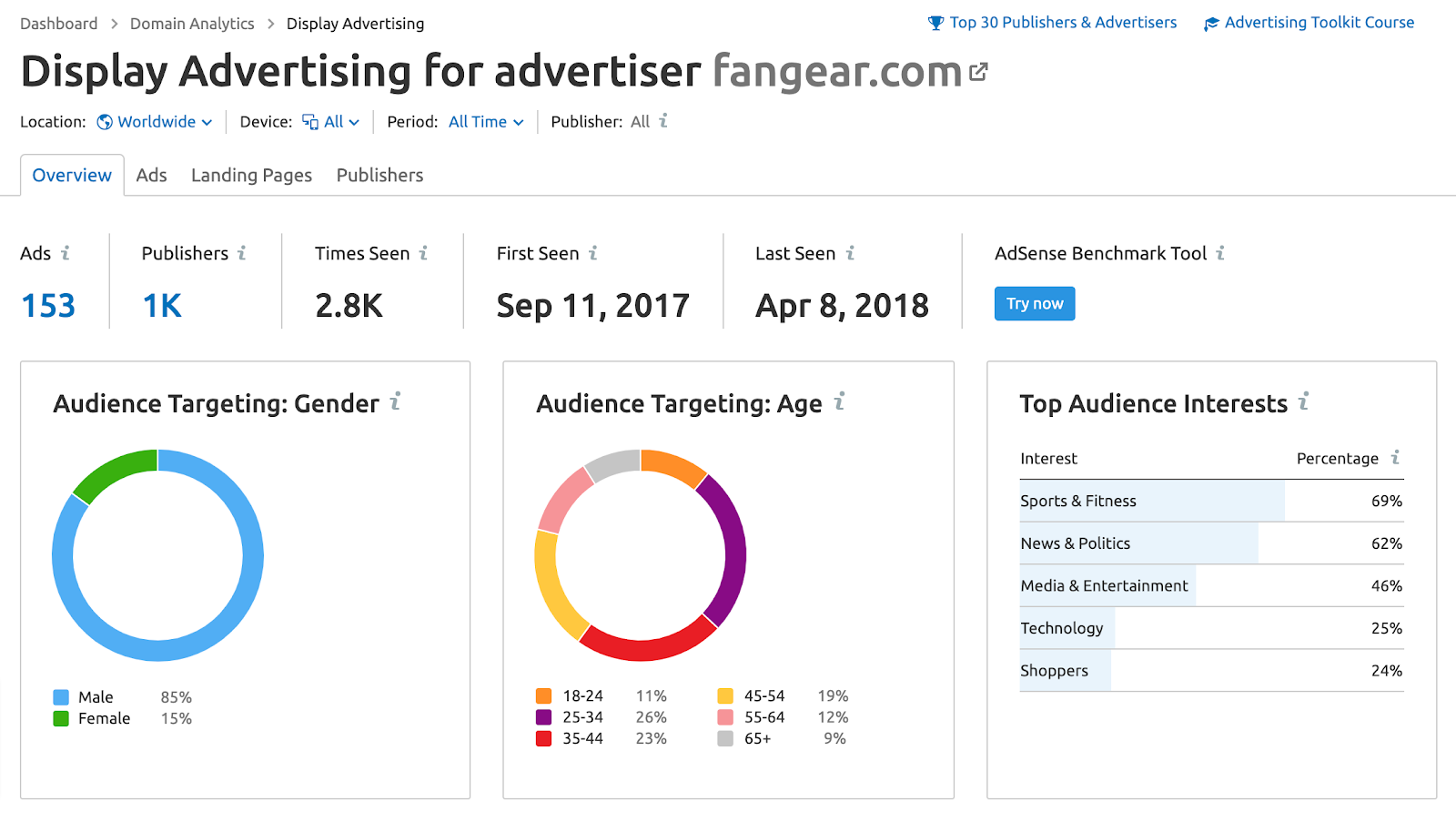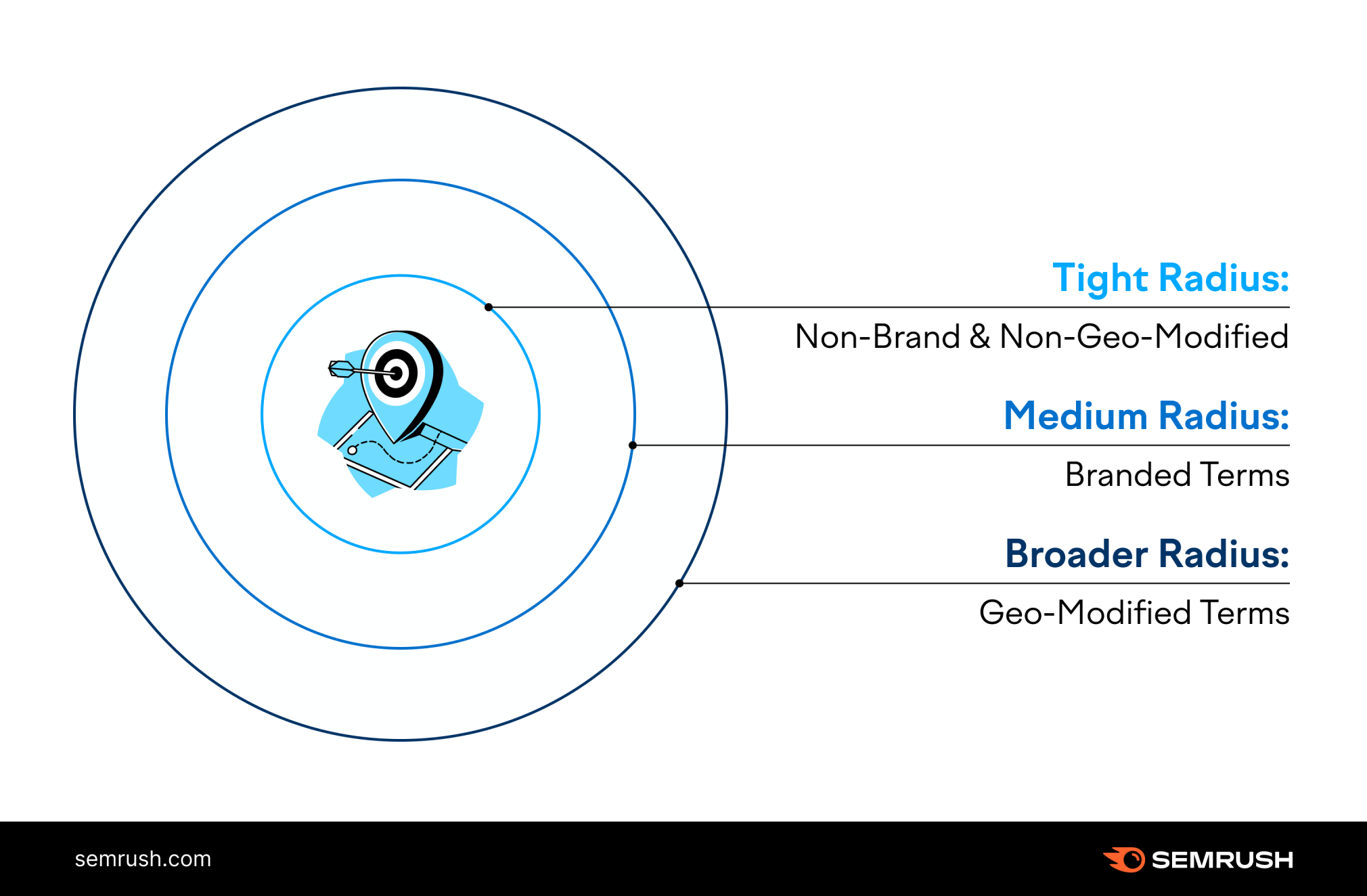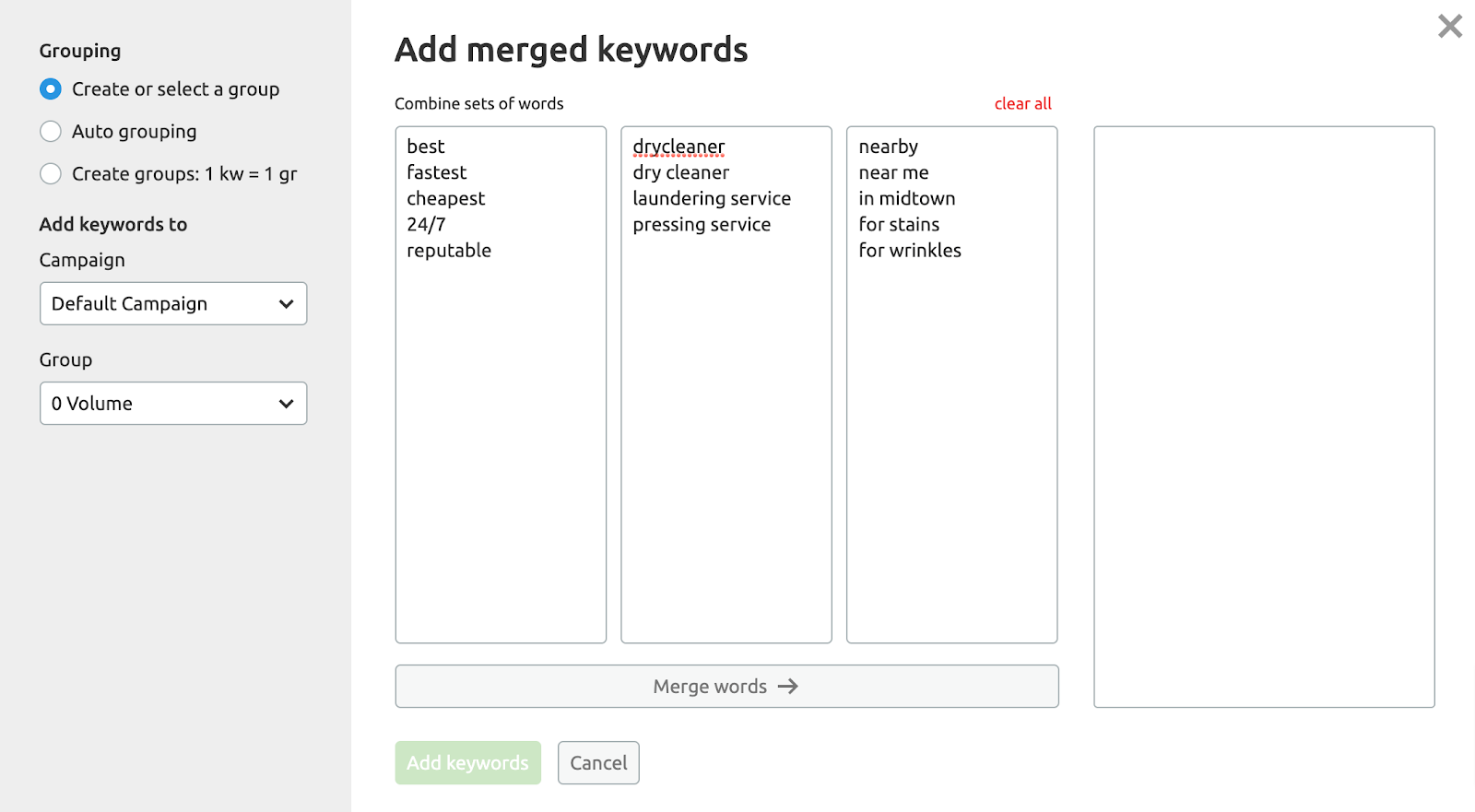Geofencing is a marketing technique used to identify potential prospects based on their location. The beauty of geofencing is that you can leverage hyper-specific location information to engage folks, using their location as an indication of what they might be interested in.
In this article, we’ll cover some of the most common ways that geofencing can be used to support marketing efforts.
How Does Geofencing Work?
Geofencing allows advertisers to identify specific location targets with the goal of reaching people in those locations. The platforms use mobile location data to identify when a prospect is in the targeted location.
Targeting specific areas based on your marketing strategy is a great way to improve your ROAS, or return on ad spend. By geotargeting, you can filter out a lot of people who aren't actually going to buy your product or service.
Identify Prospecting Audiences Based Upon Their Whereabouts
Geofencing allows marketers to get creative with their strategies. Think about your target market and ask yourself:
What is unique about my prospects? What are some specific characteristics of my prospects? Based upon those characteristics, where might they be?The hospitality industry gives us an excellent example. If you are marketing a hotel, what is unique about its prospects? Well, almost certainly, they are traveling. What are some specific characteristics of your prospects? They need somewhere to stay the night because they are not near their home. Based upon those characteristics, where might we look for folks who are traveling? The airport would be a safe bet.
Now, would you want to geotarget the airport all day every day? Maybe, maybe not. But almost certainly it could be worth targeting the airport in the evening and late into the night, specifically capturing folks who are stranded and didn’t intend to spend the night in your city.
Drive Local Foot Traffic
Geofencing can help you to identify folks in proximity to your business’s physical location, and subsequently, deliver ads enticing them to visit. For example, if you were marketing for a restaurant in a mall food court, you might geofence the rest of the mall just before mealtimes.
Build Audiences From In-Person Visitors
Geofencing isn’t only for obtaining additional traffic, though. Geofencing can also be used to build audiences from existing store visitors. Some businesses geofence their own store traffic with the goal of getting folks to sign up for email lists or download a loyalty app.
Using geofencing to drive foot traffic in combination with campaigns to build an audience helps ensure that you get the most bang for your advertising dollar. This allows your business a way to continue to market to prospects even when they aren’t near your physical location.
Tap Into Event Attendees
Imagine that you are representing your company at a conference or tradeshow. Ideally, you’d want to network with as many people as possible in order to make sure that you receive a good ROI on your conference investment.
Geofencing a conference location can be a great way to ensure that you’re top of mind for attendees. You could use ads with a call-to-action (CTA) to stop in at the booth or, if you have a large presence at the conference and you want to capitalize on the existing brand awareness, you could use a lower-funnel CTA and drive folks to a landing page with next steps.
Even if you aren’t attending, you could still geofence relevant events in order to tap into an audience with specific interests. For instance, you could target event attendees with relevant ads as a way to engage them without the expense of hosting a booth, or even flights.
Say you sell light fixtures — you could target homebuilder events and home shows open to the public. Or, if you sold fan gear, you could target events featuring a well-loved team or entertainer with your merch. Even better, you can later remarket those folks that clicked through to your site but didn’t purchase.
Use Geofencing to Conquest
Last but certainly not least, a great way to use geofencing is to conquest! You can target potential prospects visiting competitor locations. For example, a Ford dealer may want to target the other car lots in town with some of their new or used inventory.
The Downside of Geofencing
While geofencing can be incredibly useful, it’s not yet super-widely leveraged by marketers.
I believe that are a few reasons for this: one, many people still don’t know it’s possible because it requires a special platform (unless the intention is to target a mile radius, which is often too broad). And two, there are a few downsides of geofencing.
The main downsides to geofencing are that:
Not every platform is as hyper-granular as they say. It’s important to do your research and find an ad platform that can target the level of granularity that you need, otherwise, you’ll get a lot of noise in your data. Audience size is important. You’ll want to make sure that you’re targeting an area with enough potential data to put to use. This may mean adding a few different geofences or brainstorming an area that gets quite a bit of traffic. Even when targeting your specific targets, we’re still making inferences about what people are interested in. The same could be said about topic targeting for Google Display, so the best you can do is test and see what works! Some of the geofencing platforms have a minimum spend, which can get expensive.Leveraging These Principles in Search & Display Campaigns
While it’s not possible to truly geofence with Google or Bing (because there’s a minimum radius target of 1 mile), you can use geofencing principles in combination with your search, native, and display campaigns to achieve some of the same things!
If you were a retailer selling fan gear, you could target a mile radius around the center of a college campus with search and display campaigns. There’s a high likelihood that a concentrated portion of that population has an interest in your product, just based upon where they are physically.
Pro tip: Leverage Semrush’s Display Research tool to scope out your competitors’ ads and top demographics and audiences.

Looking to weed out folks who shouldn’t be seeing your ad? Target events and broader locations using Google’s required minimum one-mile radius. Then, you can qualify the traffic with audiences or keywords to ensure you’re targeting the right folks.
You can also create campaigns that have varying geotargets based upon the context of the search.
For instance, someone who searches for your specific brand is likely willing to drive further than someone who isn’t yet set on a particular brand. If their search term includes a geo-modifier, meaning they’ve specified the geography that they intend to be in, then that allows for an even broader radius since you can feel comfortable knowing that they plan to make the trip.
Let’s look at an example of this in practice: let’s say you own a dry cleaning business in Midtown NYC called Denny’s Dry Cleaners. If someone in Midtown searched “dry cleaners near me”, you’d likely want to keep a tight radius as they probably don’t plan to travel far.
If a person in Soho searched “Nearest Denny’s Dry Cleaners”, then they likely are willing to travel a bit further than the first searcher, because they have a particular brand cemented in their minds and it might be worthwhile to include them since they aren’t too far away.
Now let’s say someone in the Bronx searched “Midtown Dry Cleaners”. While you may not have targeted the Bronx in the above examples, in this case, you now know that they plan to travel to Midtown, so it makes sense to include them in your campaign.

You can check out Semrush’s PPC Keyword tool for loads of keyword optimization ideas that you can use in each campaign.
This tool allows you to easily plan and set up an optimized campaign. Because the search volume and CPC data are based on a targeted location (down to city-level), this is a great way to plan your geofencing marketing campaign.
A good place to start is the tool’s keyword recommendations based on your campaign. From there you can organize your keywords, add negative keywords, and even export your campaign when you are finished.

I’m personally a huge fan of the “Merge Words” function within the PPC Keyword tool, as it allows you to combine multiple terms to create a big list of keywords, quickly! From there, you can organize the keywords into groups in order to determine which campaign they should fall into, as well as the geotargets of that campaign.
You can choose to input the keywords by using the Keyword Manager, import from your Google Ads editor, or upload your own file.

Summary
In conclusion, there’s a wide realm of geofencing and geo-marketing options for any size of business, no matter the budget! Understanding what geofencing marketing is and how to use it can help you target potential customers in a smart, targeted way that can contribute to your ROAS. Hopefully, this article has helped you to understand the value and opportunities that exist in hyper-local digital advertising.
Innovative SEO services
SEO is a patience game; no secret there. We`ll work with you to develop a Search strategy focused on producing increased traffic rankings in as early as 3-months.
A proven Allinclusive. SEO services for measuring, executing, and optimizing for Search Engine success. We say what we do and do what we say.
Our company as Semrush Agency Partner has designed a search engine optimization service that is both ethical and result-driven. We use the latest tools, strategies, and trends to help you move up in the search engines for the right keywords to get noticed by the right audience.
Today, you can schedule a Discovery call with us about your company needs.
Source:





